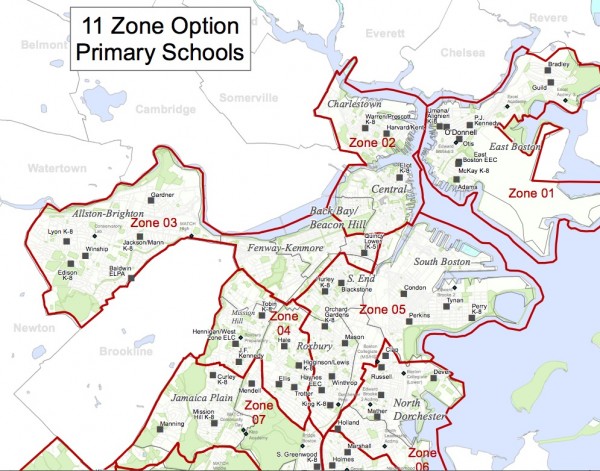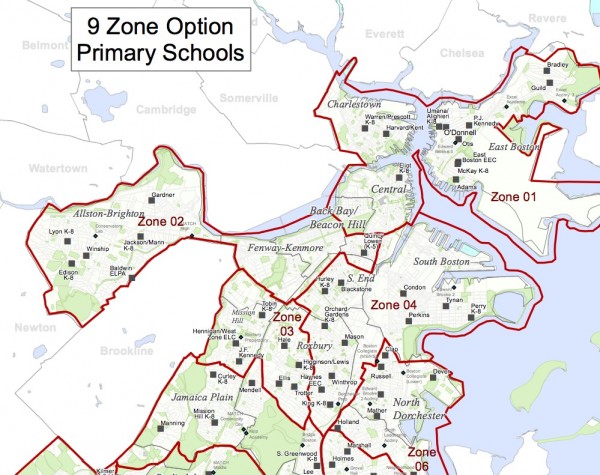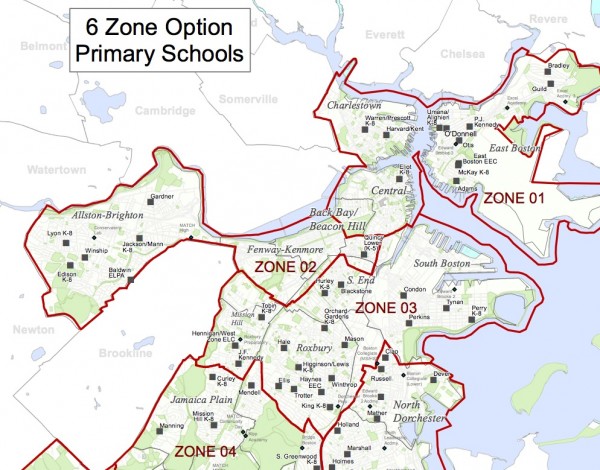Proposing the most significant change for public school choice in decades, Boston Public Schools has released four new “zone” options and one “no zone” option. All of the proposals are a substantial shift away from the current large 3-zone model, with a move toward more “neighborhood schools” and less busing.
Chair of the City Council Committee on Eduction, Councilor-at-large John Connolly, said on Monday night that reforming Boston’s school assignment lottery “marks the beginning of a historic opportunity to improve our Boston Public Schools … almost everyone agrees that the current system is broken, subjecting our families to a lottery that results in some families winning and some families losing.”
For the North End / Waterfront, the 23 and 11 zone models put the neighborhood together with downtown Boston and Charlestown, while the 9 and 6 zone models also include East Boston. There is also very good news out for the Eliot School on school quality and we will follow up on that in a separate post.
In the zone options (23, 11, 9 and 6), students living in a zone would apply to any school in their Home Zone or within their walk zones, even if that school is across a boundary. Students could also apply to citywide options. Inside every zone is a pathway. Elementary school students would feed into middle school and K-8 Schools. All high schools would remain citywide just as today. Sibling preference and walk-zone preference would still apply. If a school is across a boundary line from a students’ home but within the walk zone, that family could still apply to the school.
The “no-zone” model goes further by assigning students directly to the school closest to them. In this model, families would not make school choices and students would receive their assignment based on their address and specific programmatic needs. If the capacity at the closest school is full, then the student would be assigned to the second closest school, and so on. The average distance to school in the no-zone model would be 0.47 miles, according to BPS.
BPS Superintendent, Carol Johnson, working with a citizens advisory committee, will recommend a final plan in November that will be voted on by the School Committee in December. More information and maps are shown below, with details available on the BPS website (including information for those with special needs / disabilities and the plan for middle school pathways). A BPS feedback survey and public meetings are expected near future.
In the meantime, tell us what you think of the zone proposals by voting in the poll. Feel free to expand in the comment section at the end of this post.
Maps and data sourced from the Boston Public Schools website.









I am a Mom who created three school choice proposals with an attempt to focus on equal access to quality. http://ljgraf.com/Improving_School_Choice/Handout_Layout_Sept.pdf
I would love feedback and suggestions. I hope that other parents offer their own proposals too so the best option gets put in place.